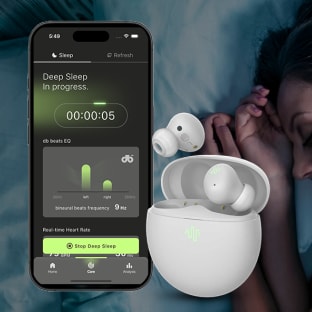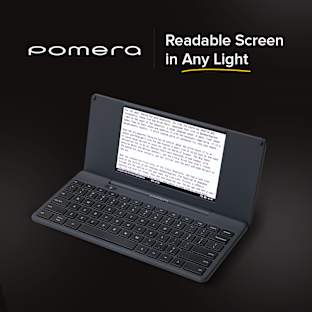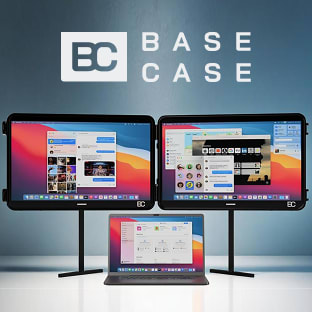Why is the Serval Mesh important, how does it work?
Mobile phones normally can't be used when cellular networks fail, for example during a disaster. This means that millions of vulnerable people around the world are deprived of the ability to communicate, when they need it most.
We have spent the past three years working with the New Zealand Red Cross to create a solution. We call it the Serval Mesh, and it is free software that allows smart-phones to communicate, even in the face of catastrophic failure of cellular networks. It works by using your phone's Wi-Fi to form impromptu networks consisting only of mobile phones.
An experimental version of the the Serval Mesh is already available on Google Play, and allows encrypted phone calls, encrypted text messaging, as well as general purpose file sharing, e.g., to easily share maps and other information during a disaster.
You can also keep using your existing phone number on the mesh, which is really important in a disaster when people are trying to get back in contact with each other.
You can see how it works in the following videos:
![Banner Frame for ABC Catalyst SOS Networks Story Banner Frame for ABC Catalyst SOS Networks Story]()
![Banner Frame for Serval Mesh 0.90RC Demo Video]()
Why the Serval Mesh Extender?
Wi-Fi in phones has problems. For example, Android prevents Wi-Fi from forming this sort of public safety network. Wi-Fi in phones has short range and was never intended to be used in this way. We had to find another way to help vulnerable people connect during disasters that didn't rely on the mobile operating system vendors.
To solve this problem this we have designed the Serval Mesh Extender that avoids these problems, and extends range 10 to 100 times compared with Wi-Fi. So instead of having a range of up to a hundred metres or so, with a mesh extender you can communicate over hundreds to thousands of metres. Distances of tens of kilometres are possible if the conditions are right.
The following image shows our latest prototype of the Mesh Extender to give an idea of what the final product might look like (with a front cover, of course):
What do we hope to accomplish?
While we have a much broader plan, the purpose of this campaign is specifically to advance the status of the Mesh Extenders.
- Use our working Mesh Extenders as prototypes for a refined design that can be produced in modest quantities.
- Produce several hundred units for donation to our humanitarian partners to subject to extensive testing.
- Get units in the hands of bleeding-edge adopters to help test and improve the technology.
- Gather feedback and user stories to help advance and promote the Serval Mesh technology so that it can benefit more people.
We are asking for US$300,000, of which about a third will be expended on hardware components, the other quarter being split between labor costs (design, assembly, distribution and gathering feedback), core operating expenses and communication of results. The exact split will depend which perks people choose.
If we do not reach our target, we will apply any contributed funds first to continue developing the Serval Mesh & Mesh Extenders, first by completing the design process, and using any balance to get as many Mesh Extenders as possible into the hands of our partners, and so operate with a smaller testing community.
If we exceed our target we will announce stretch goals that cover more of our roadmap to get the Serval Mesh and Mesh Extender technologies into the hands of the general public.
What difference will this make?
We know that the increased range of communications, and compatibility with more mobile phones is vital if our technology is going to help as many people as possible, and so we are convinced that the Mesh Extender is vital to achiving this goal.
But we know that technology on its own is only part of the picture -- it is critical to understand how people interact with the technology, and that is why we need to get substantial numbers of units out in the field so that we can work out how people use them, and what we need to do to make the technology as effective as it can possibly be.
This campaign will do exactly that, and help us to better understand what we need to do next as we take mobile mesh telephony from the lab and translate it into easy-to-use consumer-ready products and solutions. We know we have a long way to go, and this will help us take the next steps.
This work builds on our work over the past three years with New Zealand Red Cross, and over a million dollars in research and development with the support of the Shuttleworth Foundation, Flinders University, the NLnet Foundation, the New America Foundation, the Awesome Foundation and other generous supporters.
From an operational perspective, this campaign will enable us to keep our team working on advancing the Serval Mesh and Mesh Extender technologies.
How else can I get involved?
We understand that not everyone who wants to make sure people can always communicate is able to contribute financially. That's okay, because as an open-source and open-hardware project, there are plenty of other ways you can get involved and help out. For example:
- Spread the news about this campaign with everyone you know! Use the Indiegogo sharing tools on this page to make this super easy.
- We are always looking for volunteer software developers, documentation writers, testers, bug fixers and advocates.
- Contact mobile phone operating system vendors and encourage them to improve ad-hoc Wi-Fi support, for example, by starring Android Issue #82.
- If you are a mobile phone chipset vendor you could give us access to data sheets, developer tools for your cell phone chipsets so that we can build Mesh Extenders out of existing mobile phone hardware, and make them cheaper and sooner, and make a whole new market for your products!
Frequently Asked Questions (FAQs)
What is the current state of the technology?
The Serval Mesh and Serval Mesh Extender contain a bunch of new technologies that we have had to create over the past three years to make mobile mesh telephony work, and offer the kind of privacy that people require.
These technologies are typically at prototype stage, that is we can use them in certain circumstances, but they aren't all ready for trouble-free use by the general public.
So while we can easily make private phone calls, send secure text messages and share files in caves, in subways, in the Outback, in Australia or Africa, in Europe or the United States -- even when cellular networks fail or are unavailable -- we need to do more.
If you have an Android phone you can even try it out yourself, by installing the Serval Mesh from the Google Play store. But as you will discover if you read the reviews there, the software is far from finished, and until we have Mesh Extenders, it is unable to work on some handsets.
To summarise, we know that for small networks everything either already works, or can be made to work, and that apart from making the Mesh Extender, it really comes down to refining and improving what we have already created, and making it available on more platforms. If you are a software developer, document writer, tester or other digital professional or skilled enthusiast, and would like to help us make these improvements, we would welcome that. Just drop in to the serval-project-developers Google group and introduce yourself, or take a look around developer.servalproject.org/wiki.
Do I need to "root", "jail-break" or do anything else scary to my phone to use the Serval Mesh or Mesh Extender?
No. One of the major motivations for creating the Mesh Extender is so that it can work with unmodified phones.
What is the effective range of a Mesh Extender, what spectrum do they use, and are they legal to use in my country?
The initial model of the Mesh Extenders will use the ISM 915MHz band, which is available for free use in some form in each of Australia, Canada, New Zealand and the United States of America. Using that band we find that typical urban and rural range is about 10x that of Wi-Fi, if a Mesh Extender is placed indoors. That means hundreds to a couple of thousand metres between a pair of Mesh Extenders. Outdoor mounting of antennae can potentially increase that range to tens of kilometres.
For Europe and elsewhere the only immediately freely available spectrum is the 868MHz and 433MHz bands, which are very narrow, and limit applications. For example, phone calls are probably not possible over either of those bands at any appreciable distance.
While we will make an 868MHz and 433MHz version of the Mesh Extender if we receive enough backing, the long term solution for other countries is to use TV white spaces, or in the case of countries where it is still practical, encourage their regulators to proclaim the ISM 915MHz band.
Can I use a Mesh Extender to call my Auntie who lives on the other side of the world? Should I run out and cancel my mobile phone service?
The short answer is no. Mesh communications is an appropriate technology for complementing cellular networks. Think of it like two-way radio or CB radio that has been propelled into the 21st century. With mesh extenders you will be able to communicate locally. As we advance the technology the definition of "local" will likely get bigger, but for truly long-range communications you will still need to make use of cellular or fixed telephone networks or the internet.
Of course, it is possible to connect a Mesh Extender to the internet, to enable long-distance calls, but then you are back to depending on infrastructure, which probably won't help you much in a disaster. There are also significant challenges if you want to seamlessly bridge between the mesh and the existing public telephone system.
So don't go running out cancelling your mobile phone service.
If this is all such a good idea, why aren't you launching a start-up?
Basically, to us, it is the social outcome that matters most, and so we are following the not-for-profit route. We fear that venture capital or similar capital would force us to maximise profit ahead of our humanitarian agenda. That isn't to say that we don't see our technologies as being profitable, nor that we will avoid opportunities that combine profit with our humanitarian agenda. Anyone with good ideas on combining the two are most welcome to get in touch with us!
Who else thinks that this is a good idea?
The Serval Project has received financial support totalling in excess of a million dollars in the past from the Awesome Foundation for the Arts & Sciences, Flinders University, the NLnet Foundation, the Shuttleworth Foundation, the New America Foundation and the Open Internet Tools Project (OpenITP). In some cases these organisations have funded us two or even three times to work on different aspects of the technology, demonstrating their support and belief that we not only have a good idea, but that we are able to deliver.
![T-shirt rewards by Teelaunch]()

































































